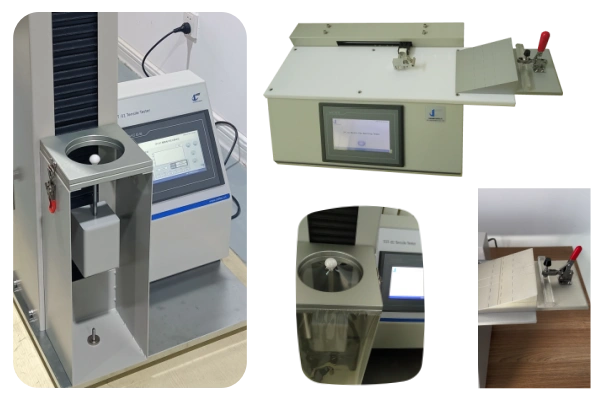Stretch film is a critical material for securing goods during storage and transit. To ensure it performs effectively, rigorous quality inspections are necessary. Below, we outline five essential stretch film quality inspection method, focusing on transparency, self-adhesion, density, and other vital metrics.

1. Stretch Film Transparency Test
High-quality stretch film must exhibit excellent clarity to allow easy identification of packaged items. The stretch film transparency test involves measuring light transmittance and haze levels using specialized equipment. A premium film appears slightly white under light, maintains high gloss, and is free from cloudiness. This test ensures the film meets visual standards, which is especially crucial for food packaging or branded goods.
2. Stretch Film Self-Adhesion Factor
Self-adhesion determines how well the film sticks to itself without additional adhesives. Stretch film self-adhesion factor are tested by observing how tightly layers bond during wrapping. However, environmental conditions like humidity, temperature, and dust can weaken adhesion. Proper storage in cool, dry environments helps preserve this property. Strong self-adhesion prevents items from shifting or loosening during transport.
3. Stretch Film Density Evaluation
Density directly impacts the film’s buoyancy and material efficiency. During stretch film density evaluation, the film is placed in water; high-quality variants float due to their low density. A lower density indicates thinner yet durable film, reducing material costs without compromising strength. This test ensures manufacturers avoid overly dense films that add unnecessary weight and expense.
4. Additional Quality Metrics
While transparency, self-adhesion, and density are critical, two other factor ensure holistic quality:
- Toughness: Measures puncture and tear resistance. Horizontal tear resistance is prioritized to prevent load loosening.
- Stretch Capacity: Tests how much the film elongates under tension. Premium films stretch 200–300% without breaking, enhancing load stability.
Conclusion
By integrating these stretch film quality inspection method—transparency tests, self-adhesion checks, density evaluations, and assessments of toughness and stretch capacity—businesses can guarantee reliable packaging solutions. Consistent quality control minimizes waste, boosts efficiency, and safeguards goods during logistics.
